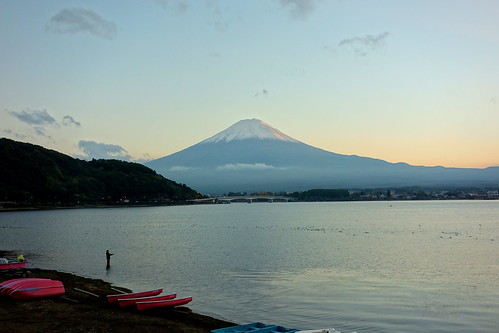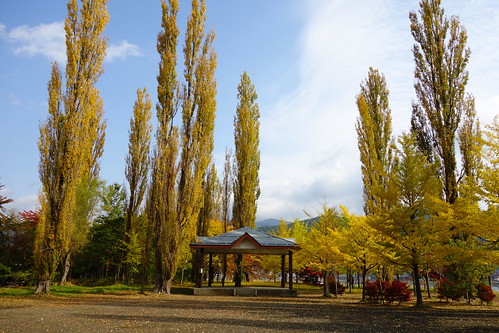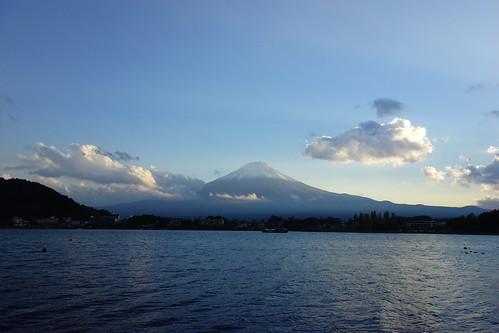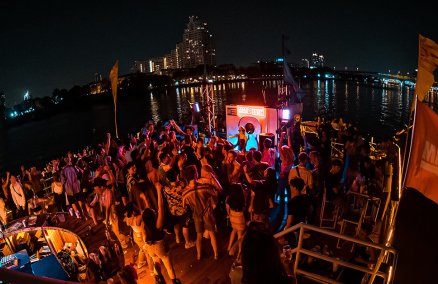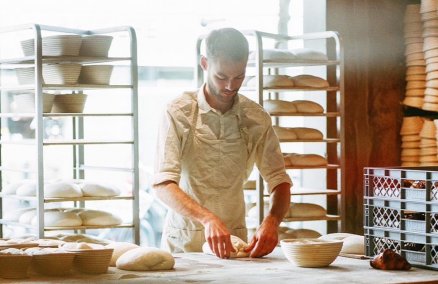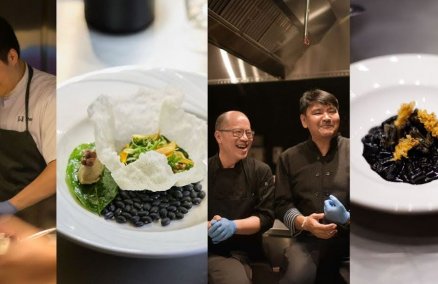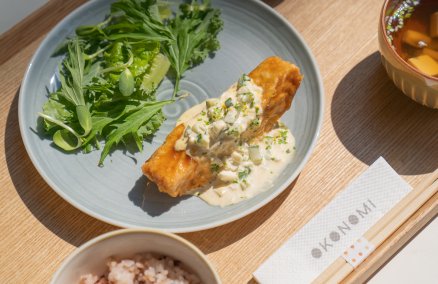Visit Tokyo's Mount Fuji via Fujikawaguchiko
Seeing Mount Fuji should be on every travel bucket list, and a trip to Fujikawaguchiko is the best way to do it.
Japan’s most iconic landmark, Mount Fuji (or Fuji-san in Japanese), is an absolute must-see for visitors. The country’s tallest mountain, it sits on the border of Yamanashi and Shizuoka prefectures, surrounded by small towns, lakes and forests. Fuji is actually a 3,7776-meter-tall volcano whose last eruption was in 1707-1708. It’s so huge, you can often see it from Tokyo on a clear day.
The most stunning views of the mountain are to be had from the shores of the five lakes of Yamanashi prefecture: Kawaguchiko, Yamanakako, Saiko, Shojiko and Motosuko. Those pictures that you’ve seen of Mount Fuji reflected in a peaceful lake framed by red autumn leaves—this is where they were taken. Of the five lakes, Kawaguchiko is probably the easiest to get to, has the most accommodation options and, crucially, offers some of the best photo ops. Set by Lake Kawaguchiko, the town of Fujikawaguchiko is also the nearest you can get to Mount Fuji before your trip turns into a full-on hike. Getting around town is easy, thanks to a hop-on-hop-off bus using the small settlement’s one road (see below).
When to Go
Kawaguchiko and Mount Fuji changes dramatically depending on the season. The most popular time to visit is during October and November, when the leaves on the trees turn red and yellow. The most pleasant walks are through the Oike-koen Park opposite the Herb Hall, from the Kawaguchiko Museum of Art to Hirose intersection, and at the Natural Living Center (see Top Sights). During December-February you’ll see Mount Fuji and the town covered with snow, which can be just as dramatic, but some attractions might close earlier—and it can get very cold! March-May is cherry blossom season, and in late Mar to mid-April, you can even see the blossoms set against snowy backdrops. In summer, the snow on the summit of Mount Fuji can sometimes disappear completely.
The beauty of Mount Fuji is unpredictable and depends on the weather conditions. On a cloudy day, you may see nothing at all. And even if the day starts out bright and sunny, look down, reach for your camera, and clouds can rush in to surround the mountaintop. It’s part of the fun. And if you do get a full view of Mt. Fuji, it will feel all the more special.
Souvenir Hunting
Kawaguchiko Herb Hall (Retro Bus #7 stop. Open daily 9am-6pm. Free entry) is a Tudor-style house turned boutique. Here, you’ll find products made from local herbs, like perfume sachets, pillows, bath cream, candles and dried flowers. The must-buy items are those made with local lavender. In the backyard, there’s also a small garden growing flowers and vegetables.
Cultural Pursuits
Opposite the Herb Hall is the Yamanashi Gem Museum (Open Thu-Tue 9am-6pm [till 5pm during Dec-Feb]. Admission ¥600) where 3,000 precious stones in 500 kinds are displayed. The gems are from around the world and this is the only place of its kind in Japan. The highlight installation is a giant 1,270-kilogram crystal. Close to the museum is a gift shop where you can buy small items of jewelry made from various stones. Walk further toward the water and you’ll find the small Happy Days Café sitting by the lake, under some pine trees.
Those into traditional and contemporary arts should pay a visit to the Kawaguchiko Museum of Art (Retro Bus #15 stop. Open Wed-Mon 9:30am-5pm [4:30pm during Dec-Mar]. Admission Y800), where paintings and photographs by local artists are displayed, many related to Mount Fuji, which has been an inspiration to artists for centuries.
Tired of walking around? Try the outdoor onsen experience at Onsen Tensui (Open daily 10am-10pm. ¥800-1,000/day), which is the closest public natural hot spring site.

Essentials
Getting to Tokyo
THAI, ANA, JAL, Delta and United fly direct from Bangkok to Tokyo. Tickets are commonly in the B30,000 range, so do hold out for their promotions, when you can bag tickets for around B18,000 roundtrip. You could opt for AirAsia (stopover in KL) or Scoot (stopover in Singapore), but the prices are not really low enough to justify the hassle of changing and lack of service.
Getting to Kawaguchiko From Tokyo
Bus: Head to Shinjuku JR station’s west exit. Walk to your left, passing Odakyu department store and turn left at the first corner. You’ll pass a bus station on your right. Wait until you see a zebra-crossing on the right to cross the road to the opposite building, where a ticket center for Keio Express Bus is on the second room of the first floor, opposite a camera shop. A ticket to Kawaguchiko is ¥1,700/one-way, ¥3,400/roundtrip. The bus trip takes almost two hours and will drop you at Kawaguchiko train station.
Train: Good for those who own a JR Pass but more expensive otherwise (and it requires several train changes). Starting from Shinjuku station, you have to get yourself to Otsuki station. Get the JR Chuo Rapid to Takao then change to normal JR Chuo trains (¥1,280/trip). From Otsuka, change to the Fujikyu line (¥1,100/trip) to Kawaguchiko station.
Getting Around Kawaguchiko
Bus: Buy a retro bus ticket (¥1,000 for one lake, ¥1,300 for two lakes) and you can easily get around this small town.
Taxi: They’re very expensive. Meters starts at ¥710 for the first two kilometers, then it’s ¥90 for every 100 meters.
Where to Stay
Budget: Kawaguchiko Station Inn is the most popular among budget travelers, due to its location right in front of Kawaguchiko station. It offers choices of rooms from dorm to private Japanese room with tatami mats. There are no private bathrooms but their Japanese-style bath halls (men and women are separate) have a nice view of the mountain. Rates are from B1000/bed for a dorm room and B1300-1500 for a private room.
High-end: Kozantei Ubuya has everything you’d expect from a luxe Japanese-style inn, from its minimal wooden façade to spacious, traditionally-decorated rooms. All rooms have en-suite bathrooms and balconies. Rates are from around B18,000/night with breakfast. The hotel does not have its own website so book through www.agoda.com or www.japanican.com.
Visa
Thai nationals need a visa to enter Japan. Apply at the Japan Visa Application Centre (15/F, Unit C, Silom Complex Building, Silom Rd. 02-632-1541-4. Open Mon-Fri 8:30am-5:30pm). Fees are B1,120 for a single visit and B2,200 for a three-year multiple-visit visa—both with an additional B535 service fee.
Currency
¥100 = B39
| Address: | Visit Tokyo's Mount Fuji via Fujikawaguchiko, Fujikawaguchiko, Japan |
| Report a correction | |










